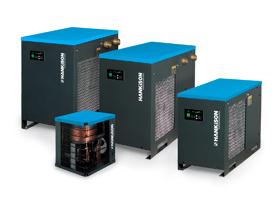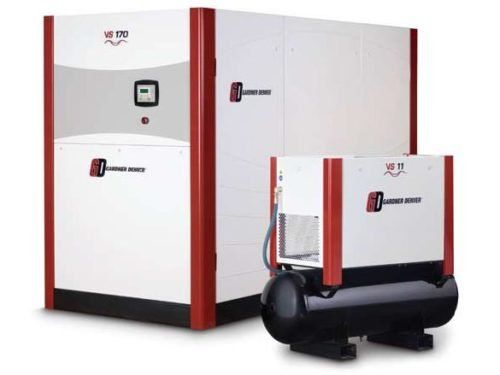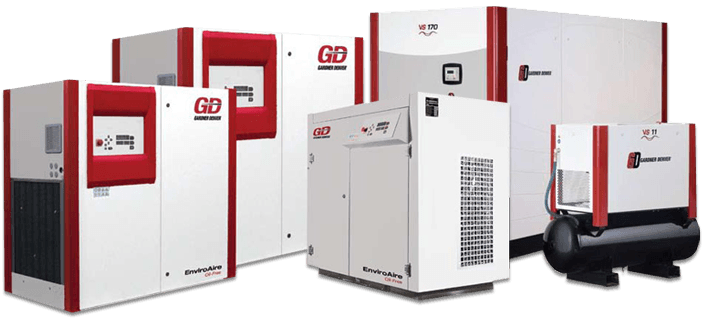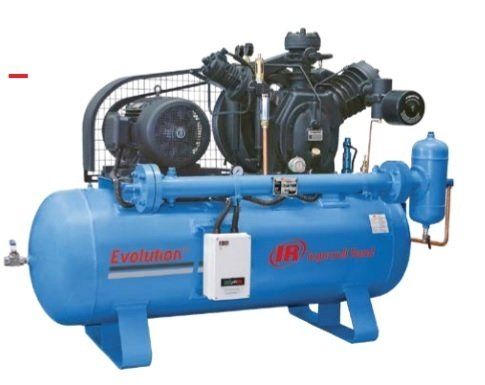Blog
BLOG
By Armani Goens
•
26 May, 2021
Desiccant dryers use desiccant material—specialized drying agents—to adsorb water vapor from process air
By Energy Machinery, Inc.
•
05 May, 2021
At Energy Machinery, we offer an extensive catalog of rotary vane compressors from Gardner Denver and other major compressor brands.
By Energy Machinery, Inc.
•
26 Mar, 2021
Positive displacement compressors ultimately generate higher pressure levels by decreasing the available volume for captured air
By Armani Goens
•
26 Jan, 2021
In summary, both oil-lubricated and oil-free air compressors have unique capabilities, advantages, and drawbacks.
By Energy Machinery, Inc.
•
10 Nov, 2020
Choosing the right Positive Displacement Blower type for a given application is essential.

By Energy Machinery, Inc.
•
06 May, 2019
Compressed air can be damaging to applications that require moisture-free air. Atmospheric air that enters an air compressor intake contains water vapor. While in the air compressor, heat from compression and pressurization forces water vapor to condense into liquid droplets. These droplets travel downstream and can ruin your products, air tools, cylinders, and air motors. Refrigerated air dryers take the moisture-laden air from the air compressor discharge and lower the temperature condensing the water vapor to water and separating it from the air before it goes downstream damaging product and equipment.

By Energy Machinery, Inc.
•
05 May, 2019
Rotary screw air compressors controlled by VSDs (variable speed drives) are one of the best energy efficient industrial innovation introduced in the past few years. The style of air compressor control can reduce energy wasted by compressors running in the unloaded condition exponentially. Variable speed air compressors are ideal for plants that have fluctuating demand. Some examples of this demand include Single shift seasonal type businesses that have higher production levels for a couple of months out of the year, or 24/7 operations, that have varying demands between shifts.

By Energy Machinery, Inc.
•
08 Jan, 2019
Air compressors, like many other types of mechanical equipment, require adequate lubrication to ensure maximum longevity and optimum performance. The piston, in particular, needs to be able to draw and compress air with minimum frictional resistance. In this regard, air compressors are available in two primary configurations: oil vs oil free air compressor systems. In oil-lubricated compressors, oil is used to reduce the friction between the piston and the walls of the piston chamber. Oil may even be splashed onto the walls and bearings of the cylinder by means of an oil bath. This type of compressor is also referred to as oil-flooded. On the other hand, oil-free compressors, as their name suggests, do not require lubrication oil. Instead, the piston is pre-lubricated with a Teflon (PTFE) coating. Teflon has one of the lowest coefficients of friction among any solid due to its layered structure, which possesses relatively weak intermolecular bonding forces. These layers easily slide past each other with minimal effort, significantly reducing the friction between the coated elements. While many compressors in use today are oil-lubricated, oil-free compressors are quickly gaining popularity among various industries. Oil-free compressors are less expensive and capable of achieving the same level of performance as their oil-lubricated counterparts in most applications, making them ideal for myriad industrial purposes. However in the case of oil vs oil free air compressor machines, which one does your business need?

By Energy Machinery, Inc.
•
07 Jan, 2019
Compressors are mechanical devices used to intentionally increase the pressure of a air. They work by “squeezing” the air into a smaller volume, thereby causing a buildup of stored potential energy to be used when needed. Although there are many types of compressors, most of them generally fall under two classifications: dynamic and positive displacement. Reciprocating compressors belong to the category of positive displacement compressors. These type of compressors operate by drawing fluid into a fixed-volume chamber via a mechanical component which physically displaces the air. Other types of positive displacement compressors include rolling piston, rotary screw, rotary vane, and diaphragm compressors.
10 Reservoir Park Dr, Rockland, MA 02370 | 800-643-4330 | info@energymachineryportlandme.com
- Monday
- -
- Tue - Fri
- -
- Sat - Sun
- Closed
Content, including images, displayed on this website is protected by copyright laws. Downloading, republication, retransmission or reproduction of content on this website is strictly prohibited. Terms of Use
| Privacy Policy




